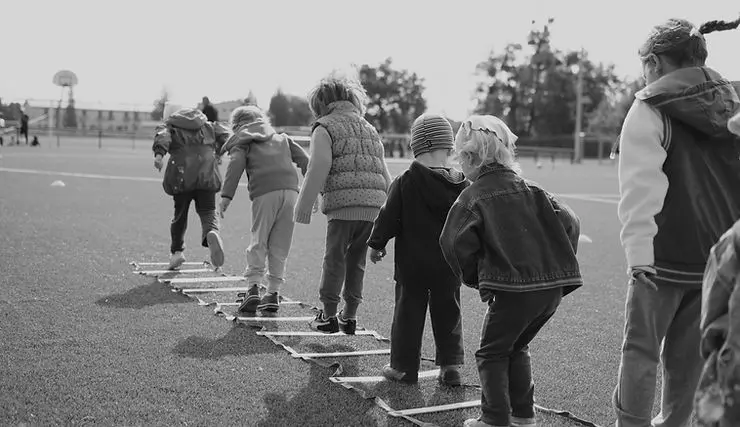The Importance of Child Safety Training in the Early Learning Sector
Organisations in the Early Learning Sector have legal and moral obligations to protect the safety and wellbeing of children in their care. This is a hot topic at the moment, given the recent events in the media which have highlighted the importance child safety training in the Early Learning Sector to prevent abuse.
Child safety training is a critical component of ensuring that organisations in the Early Learning Sector are meeting their child safety obligations. Child safety training equips organisations, and staff within organisations, with the knowledge and skills necessary to recognise, prevent and respond to situations that may place children at risk of harm. Child safety training is an essential tool to mitigate risk of harm to children and young people and create safe and supportive environments.
Child Safe Standards and National Principles for Child Safe Organisations
The National Principles for Child Safe Organisations (National Principles) have been endorsed by all states and territories across Australia. Some states across Australia including Victoria, New South Wales, and Tasmania have legislated the National Principals, and soon Queensland. For example, in Victoria, any organisation that has the care, supervision or authority of children and young people are subject to the 11 Child Safe Standards (Standards), which are based on the National Principles.
National Principal 7 (Standard 8) requires that organisations equip staff and volunteers with the knowledge, skills and awareness to keep children and young people safe through ongoing education and training. Therefore, it is a requirement that organisations provide child safety training to staff, and that staff are fully aware of their legal obligations for reporting and preventing abuse and harm to children.
What is Child Safety Training?
Organisations must take proactive and preventative steps within that organisation to promote the wellbeing, safety and welfare of children and protect them from exposure to harm, trauma and abuse.
Key elements of Child safety training should include education on:
- The National Principles and Child Safe Standards
- Understanding child abuse
- Recognising indicators of harm
- Duty of care
- Reporting obligations, including mandatory reporting and the Reportable Conduct Scheme
- Identifying and mitigating risk
- Responding to disclosures, complaints and risks
- Understanding the organisation’s Child Safety Policy suite
Child safety training should be provided to all employees and volunteers. Child safety training should form part of the organisation’s induction process for all new employees and must be addressed frequently in staff meetings and briefings, including upskilling and filling gaps. In addition, refresher child safety training should be provided to staff on an ongoing basis at least annually.
The Importance of Child Safety Training and Supervision
Prevention of Harm
The primary goal of child safety training is to prevent harm to children. By educating adults on the signs of abuse and harm and the appropriate responses, the likelihood of identifying and addressing issues early increases significantly. This proactive approach can help safeguard children before situations escalate.
Empowering Adults and Children
Child safety training empowers organisations and their staff with the knowledge they need to protect children effectively. It also encourages children to understand their rights and recognise inappropriate behaviour, fostering an environment where they feel safe to speak up about their experiences.
Creating a Culture of Safety
Child safety training is instrumental in establishing a culture of safety within organisations. When everyone – staff, volunteers and parents, understands and prioritises child safety it creates an environment where children can thrive without fear of harm.
Reducing Risk and Liability
Organisations that prioritise child safety through comprehensive training are taking steps to reduce the risk of incidents occurring. This not only protects children but also minimises potential legal liability for the organisation fostering a safer environment for all.
Supervision of Staff
Staff and volunteers must be supervised and supported in conjunction with their training. Management should be trained to spot behaviours that can compromise child safety and ensure that they take steps to address and correct those behaviours. Regular supervision ensures that all staff members are meeting their child safety requirements and allows organisations to identify potential risks and respond to risks before children are harmed. This should include conducting regular safety audits and maintaining a risk management system to ensure there are real-time responses to any incidents or areas of concern.
How Can Safe Space Legal Help?
Safe Space Legal has extensive experience working with organisations in the Early Learning Sector to ensure they are meeting their child safety obligations.
Safe Space Legal provides tailored child safety training for organisations on legal obligations, duty of care, Reportable Conduct Schemes and child safety.
Safe Space Legal provides the following services to ensure organisations meet their legal obligations:
- Drafting best practice child safety policies, procedures and codes of conduct;
- Conducting gap analysis audits of critical incidents;
- Providing training on legal obligations, duty of care and child safety;
- Conducting child safety investigations which are compliant with relevant state and territory schemes; and
- Provide sound legal advice on risk mitigation.
Contact office@safespacelegal.com.au or call (03) 9124 7321 to organise a complementary discussion in relation to your organisation’s safeguarding needs.





